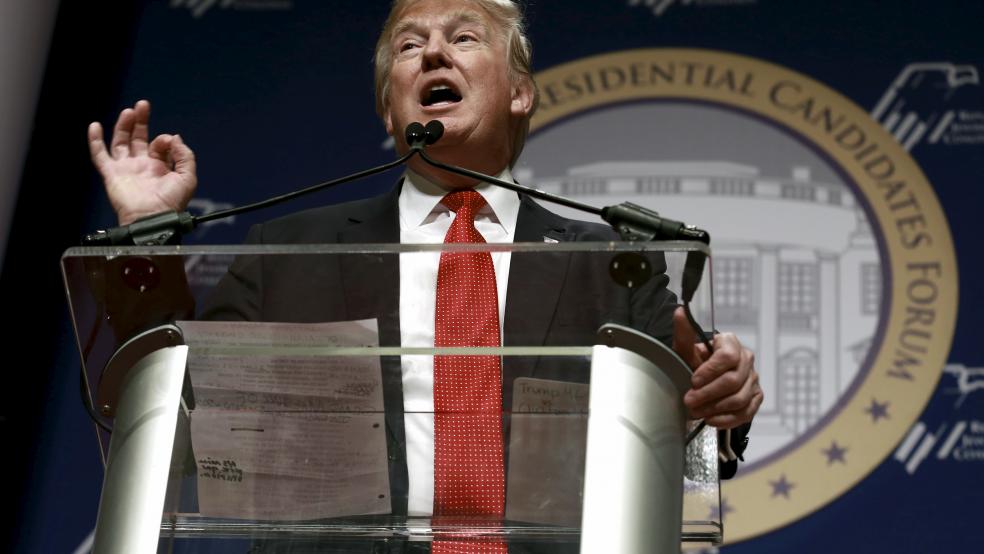It has long been clear that one of the biggest hurdles standing between Donald Trump and the Republican presidential nomination is voter turnout. The Republican frontrunner’s support in national polls has him far in front of most of the competition, but it’s unclear how motivated those voters will be to go to the polls in a primary election – and according to new data reported by The New York Times, it’s unclear whether some of them will be allowed to vote at all.
While Trump has significant support across all demographic sectors of the voting population, including age, wealth, education, and geography, he is notably strongest in particular niches comprised of people who are, on average, least likely to go to the polls.
Related: Trump’s Message to Iowa – Ted Cruz Isn’t One of Us
The Times relied on information collected by Civis Analytics, a data firm with ties to the Democratic Party.
Unsurprisingly, Trump’s strongest support comes from voters who are older, white, less wealthy, and poorly educated. (This does not mean all Trump supporters are white, poor, and ill educated. It just means that he is particularly popular among people who fit that description.)
The bad news for Trump is that people in that category are historically much less likely to go to the polls in a general election year – and much less to vote in a primary – than other voters.
Also, according to Civis, even if some of these voters do manage to make it to the polls, they might find themselves turned away because they are registered as Democrats. The Times reported that voters who self-identify as Republican but remain registered as Democrats support Trump at a 43 percent rate.
Related: The 2016 Primaries Will Pare the GOP Nominees Down to These Five
Republican-leaning voters with a Democratic voter registration – many of whom registered decades ago – are particularly common in the Appalachian region of the country, where Republicans tend to do well in presidential elections.
The problem for Trump is that in some states, election laws bar voters registered with one party from voting in a primary for the other party. That means those voters, should they stir themselves enough to go to the polls in the first place, would be lost to Trump until the general election. It’s a relatively small sub-sector of the voting population, but in a close election, even a percentage point or two can make a big difference.
Another interesting – and potentially disturbing – bit of information uncovered by Civis and reported by The Times is that when mapping the areas of the country where Trump is the strongest, the results tend to correlate closely with maps that make an effort to identify the most racist parts of the country.
Related: O’Malley Says the Democratic Primary Is ‘Rigged’
A map outlining, for example, the prevalence of racially charged Google searches shows they are most frequent in a swath of the country beginning in the Deep South and extending up through Appalachia and into New York. The map of Trump’s support is strikingly similar.
Does this mean all of Trump’s supporters are racist? No. It doesn’t even mean that many of them necessarily are. But taken together the Civis data suggests that just as being old, poor, white, and ill-educated increases the chances that a particular voter will be a Trump supporter, so does living in a place where racist activity on the Internet is more common.





